Monthly Archives: November 2024
SOURCE: IDRW.ORG.

Ordnance Factory Medak (OFM), one of India’s premier defense manufacturing units under the Ministry of Defence, has recently dispatched advanced Quadrant Fire Control systems and Optical Quadrant KO-60 to Israel. This dispatch reflects India’s expanding technical expertise and strengthening defense ties with international allies, particularly Israel, which has been a strategic partner in technology exchange and defense cooperation.
The Quadrant Fire Control systems produced by Ordnance Factory Medak are precision instruments essential for artillery fire control, enabling accurate targeting by measuring the angle of inclination on various surfaces. The precision of these instruments allows military units to calibrate artillery and other equipment with high accuracy, optimizing performance in tactical and battlefield scenarios.
Continue readingSOURCE: RAUNAK KUNDE / NEWS BEAT / IDRW.ORG
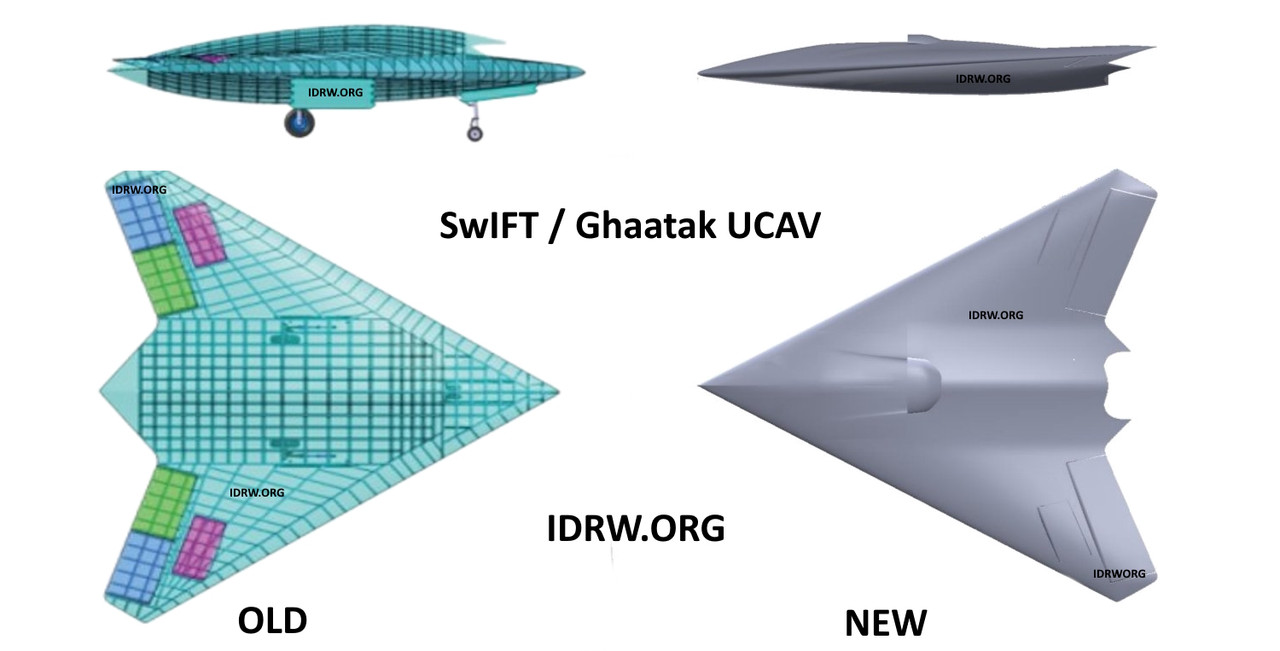
The Defence Research and Development Organisation (DRDO) and the Aeronautical Development Establishment (ADE) are set to begin fabricating a full-scale model of the Ghatak stealth unmanned combat aerial vehicle (UCAV) program. This development follows the infusion of funding for the Advanced Medium Combat Aircraft (AMCA) and Ghatak programs, signifying a major milestone in India’s indigenous stealth aircraft capabilities.
The Ghatak is a 12-ton, stealthy unmanned aerial vehicle (UAV) designed to operate in high-threat environments. It is intended to perform deep penetration strikes, surveillance, and reconnaissance missions in contested airspace, where conventional manned aircraft may not survive.
Continue readingSOURCE: RAUNAK KUNDE / NEWS BEAT / IDRW.ORG

The Defence Research and Development Organisation (DRDO) has added a significant advancement to India’s arsenal with the development of TARA, the Tactical Advanced Range Augmentation system. This new glide bomb series, which will include variants based on 250kg, 450kg, and 500kg bomb bodies, marks India’s first indigenous glide weapon system designed to enhance the precision and range of air-delivered munitions.
One of the standout features of the TARA series is its integration of dual CCD (Charge-Coupled Device) / IIR (Imaging Infrared) seekers, providing enhanced target acquisition and guidance. The inclusion of advanced scene-matching algorithms significantly boosts the bomb’s ability to locate and engage targets in complex environments, including under adverse weather conditions or in the presence of countermeasures.
Continue readingSOURCE: RAUNAK KUNDE / NEWS BEAT / IDRW.ORG

The Indian Navy’s ageing Kilo-class submarine fleet, once the backbone of its underwater force, has now dwindled to seven from its original strength of ten submarines. The fleet, officially designated as the Sindhughosh class, has been a critical part of India’s naval capabilities for over three decades. However, with advancements in submarine technology and the increasing challenges posed by modern naval warfare, the Indian Navy is now preparing for the gradual phase-out of these vessels.
The reduction in the Kilo-class fleet began with the retirement of INS Sindhudhvaj in July 2022, a submarine that had served the Navy since 1987. Another significant loss was the tragic sinking of INS Sindhurakshak in 2013, which was caused by an onboard explosion that claimed the lives of 18 sailors. Further, the INS Sindhuvir was transferred to Myanmar in 2020 as part of defence cooperation between the two nations, reducing the fleet size.
Continue readingSOURCE: IDRW.ORG.

2022 trials at the Indian Navy’s airbase, INS Hansa in Goa, tested two leading fighter jets, Dassault’s Rafale M and Boeing’s F/A-18E/F Super Hornet, both competing for a key role in enhancing the Navy’s carrier-based combat capabilities. Sources familiar with the trials indicate that the Rafale M outperformed the Super Hornet on several critical technical criteria, with one significant differentiator being the lack of an integrated Infrared Search and Track (IRST) system on the F/A-18E/F.
The IRST system is a passive, infrared-based tracking sensor that allows a fighter jet to detect and follow enemy aircraft without emitting radio frequencies, thus remaining undetected by adversaries. By operating exclusively in the infrared spectrum, the IRST system provides the ability to spot airborne threats well beyond visual range. This is particularly valuable in modern combat scenarios, where stealth and the element of surprise are critical.
Continue readingSOURCE: IDRW.ORG.
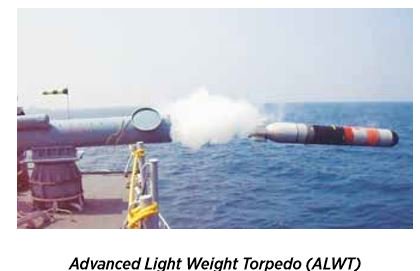
India’s Defence Research and Development Organisation (DRDO) is set to elevate the capabilities of the Advanced Light-Weight Torpedo (ALWT) with a 100 kW Magnesium-Silver Chloride (Mg-AgCl) battery upgrade, intended to boost its speed from 33 knots to an impressive 47 knots—a significant 42% increase. This enhancement aims to meet evolving anti-submarine warfare (ASW) requirements for the Indian Navy, furthering India’s indigenous defense technology capabilities.
The ALWT is the second generation of the Shyena torpedo, developed by DRDO’s Naval Science and Technological Laboratory (NSTL), with production managed by Bharat Electronics Limited (BEL). Specifically designed for anti-submarine warfare, the ALWT has cleared all trials and has been proposed for production.
Continue readingSOURCE: RAUNAK KUNDE / NEWS BEAT / IDRW.ORG
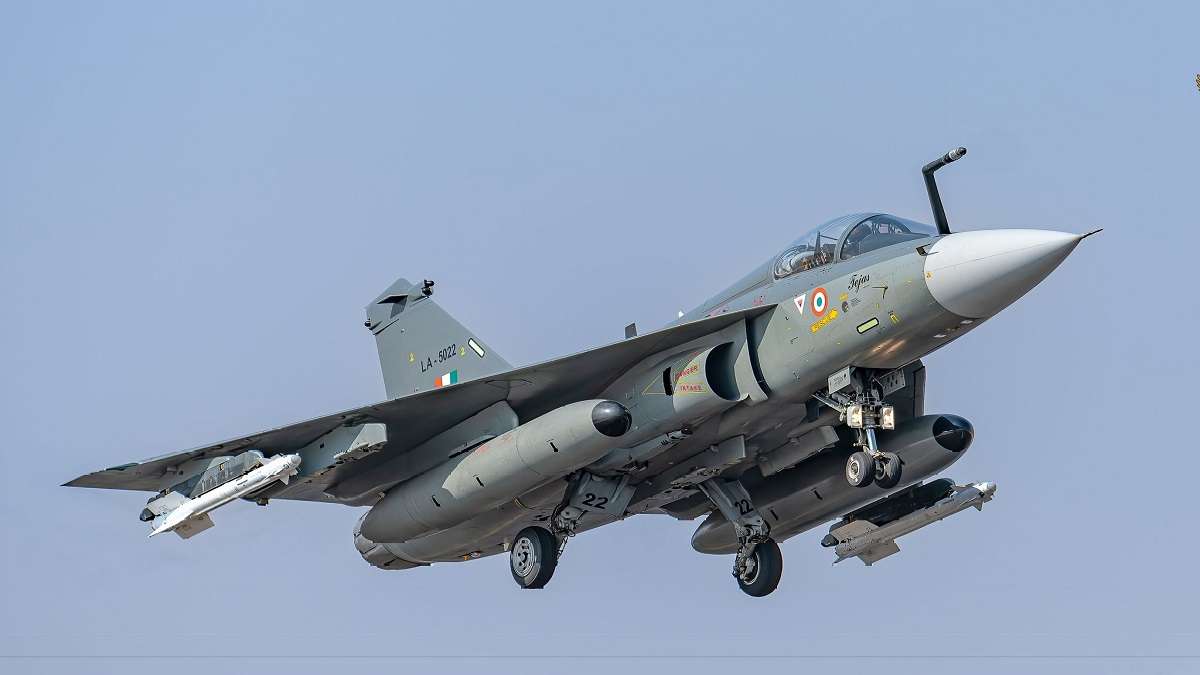
Hindustan Aeronautics Limited (HAL), the lead integrator of the indigenous Tejas Light Combat Aircraft (LCA), is facing significant delays in the production of the Tejas Mk1A due to the lack of supply of F-404 engines from GE Aerospace. The setback has affected the planned rollout of the first Tejas Mk1A jet from HAL’s new third production line, located in the MiG complex in Nashik. Originally scheduled for November, the milestone has now been postponed till March 2025, further impacting HAL’s ambitious production targets.
HAL, which currently operates two Tejas LCA production lines in Bangalore, has been manufacturing 16 aircraft per year. However, the lack of F-404 engines has caused production to slow down. HAL had aimed to expand its manufacturing capacity by opening the Nashik plant, with plans to initially produce an additional five Tejas Mk1A jets per year and eventually ramp up to eight. The production boost at Nashik was seen as critical to meeting the Indian Air Force’s (IAF) requirement of 83 Tejas Mk1A jets, which were ordered under a ?46,898 crore contract signed in February 2021.
Continue readingSOURCE: RAUNAK KUNDE / NEWS BEAT / IDRW.ORG

India’s Defence Research and Development Organisation (DRDO) is planning an Accelerated Ageing Test (AAT) for the New Generation Anti-Radiation Missile (NGARM), also known as Rudram-1, to estimate its shelf life. The test will be conducted at elevated temperatures of +60°C on the missile’s propulsion system and propellant cartons. Such tests are crucial in determining the long-term reliability and operational readiness of the missile under varying environmental conditions, especially in extreme climates, which is a key requirement for modern defence systems.
Accelerated Ageing Tests are a standard procedure in missile and ammunition development, simulating long-term environmental impacts within a shorter timeframe. The goal of AAT is to assess the shelf life and stability of the missile’s propulsion system and propellant under stressful conditions. By subjecting these critical components to elevated temperatures like +60°C, DRDO can predict how well the missile’s propulsion and propellant systems will hold up over time when exposed to real-world conditions, such as high heat or storage in tropical climates.
Continue readingSOURCE: RAUNAK KUNDE / NEWS BEAT / IDRW.ORG

As India ramps up its efforts to procure 114 fighter jets for the Indian Air Force (IAF) under the Multi-Role Fighter Aircraft (MRFA) tender, Saab India has been aggressively promoting its Gripen-E fighter jet as a top contender. In a bid to enhance its appeal, Saab has announced that it is open to integrating Indian-made weapons into the Made in India Gripen-E fighter jets and is willing to collaborate with the IAF on software development to ensure a smooth integration process.
Saab India has reaffirmed its commitment to the Make in India initiative, promising to develop the Gripen-E fighter jet in India if selected for the MRFA contract. The company is also open to incorporating a wide array of Indian-made weapons, such as the Astra beyond visual range air-to-air missile, the Rudram anti-radiation missile, and the Smart Anti-Airfield Weapon (SAAW).
Continue readingSOURCE: IDRW.ORG.

The Indian Air Force (IAF) has taken a significant step toward preserving its aviation heritage by initiating the revival of two MiG-23UB trainer aircraft. Through its Headquarters Maintenance Command (HQ MC), the IAF has issued an Expression of Interest (EoI) inviting qualified Indian firms to participate in the restoration and maintenance of these historic aircraft. The selected firms must have the technical expertise, financial stability, infrastructure, and experience required to make these MiG-23UB trainers flyworthy once again, and to support their long-term upkeep as part of the IAF’s Heritage Flight.
The MiG-23, an iconic swing-wing fighter developed by the Soviet Union, served in the IAF from the early 1980s and played a crucial role in bolstering the force’s air superiority capabilities. Known for its powerful performance in high-speed intercepts, the MiG-23 fleet included variants like the MiG-23MF, MiG-23BN, and the MiG-23UB, which was specifically designed as a two-seat trainer for pilot training and specialized missions. The MiG-23MF variant was retired in March 2007, followed by the MiG-23BN ground-attack variant in March 2011. However, a limited number of MiG-23UB trainers continued to operate for specialized roles within the IAF, maintaining a connection to the aircraft’s rich legacy within the service.
Continue readingSOURCE: IDRW.ORG.
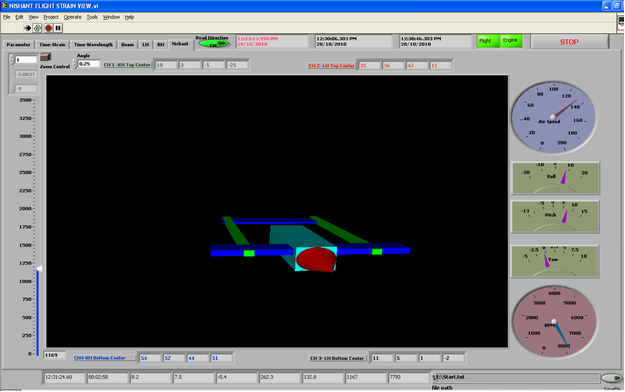
The Technology Development Fund (TDF) has issued a call to Indian Micro, Small, and Medium Enterprises (MSMEs) to develop a Fiber Bragg Grating (FBG)-based Structural Health Monitoring (SHM) system. The aim of this initiative is to enhance the structural integrity of various vehicles and systems by continuously monitoring their health throughout their operational lifespan, ensuring both safety and economic efficiency.
Structural Health Monitoring (SHM) systems are designed to monitor the health of a structure, ensuring its static strength, durability, and damage tolerance during its specified usage period. The primary goal of SHM is to prevent unexpected structural failures, which can pose safety risks and lead to expensive repairs. By having structures equipped with SHM systems, maintenance teams can receive real-time data on the overall health of the structure based on information gathered from built-in sensors and analyzed by SHM algorithms.
Continue readingSOURCE: RAUNAK KUNDE / NEWS BEAT / IDRW.ORG

Russia’s Rosoboronexport has proposed its Su-35 multi-role fighter for the Indian Air Force’s (IAF) ambitious Multi-Role Fighter Aircraft (MRFA) program, which aims to procure 114 advanced fighters. According to Rosoboronexport officials, the company has ramped up Su-35 production to double-digit levels, despite the ongoing war, and is prepared to deliver the required quantity to India should the Su-35 be selected.
The Su-35, an advanced and highly manoeuvrable multirole fighter, boasts a range of capabilities that align with IAF requirements for air superiority and ground attack roles. Equipped with an upgraded AL-41F engine—an advanced iteration of the AL-31F used in India’s existing Su-30MKI fleet—the Su-35 promises both ease of transition for IAF pilots and significant performance enhancements.
Continue readingSOURCE: RAUNAK KUNDE / NEWS BEAT / IDRW.ORG

The Indian Army is set to begin trials for the much-anticipated Mounted Gun Systems (MGS), with three contenders from India’s defence industry preparing to showcase their artillery solutions. The Army’s requirement for around 300 units of MGS has prompted significant competition between DRDO-Kalyani, Tata Advanced Systems Limited (TASL), and Advanced Weapons and Equipment India Limited (AWEIL).
DRDO, in collaboration with Kalyani Group, has developed a 155mm/52 calibre Mounted Artillery Gun System (MGS), which is already undergoing company trials. Mounted on a BEML-developed Tatra 8×8 chassis, the DRDO-Kalyani MGS is designed for high mobility, allowing the rapid deployment of artillery firepower in diverse terrains.
Continue readingSOURCE: RAUNAK KUNDE / NEWS BEAT / IDRW.ORG

The Aeronautical Development Establishment (ADE) is developing a cutting-edge Digital Flight Control Computer (DFCC) for India’s 5th generation Advanced Medium Combat Aircraft (AMCA) fighter jet program. This next-gen DFCC will feature a core processor offering nearly 25 times the computing power of the DFCCs seen on the Tejas Mk1A and the upcoming Tejas MkII aircraft.
In a modern fighter jet, the DFCC plays a crucial role in managing flight control systems and ensuring the aircraft’s stability, manoeuvrability, and overall performance. It acts as the brain behind the aircraft’s flight control operations, processing data from sensors and input devices and sending real-time commands to the aircraft’s control surfaces, engines, and avionics.
Continue readingSOURCE: IDRW.ORG.
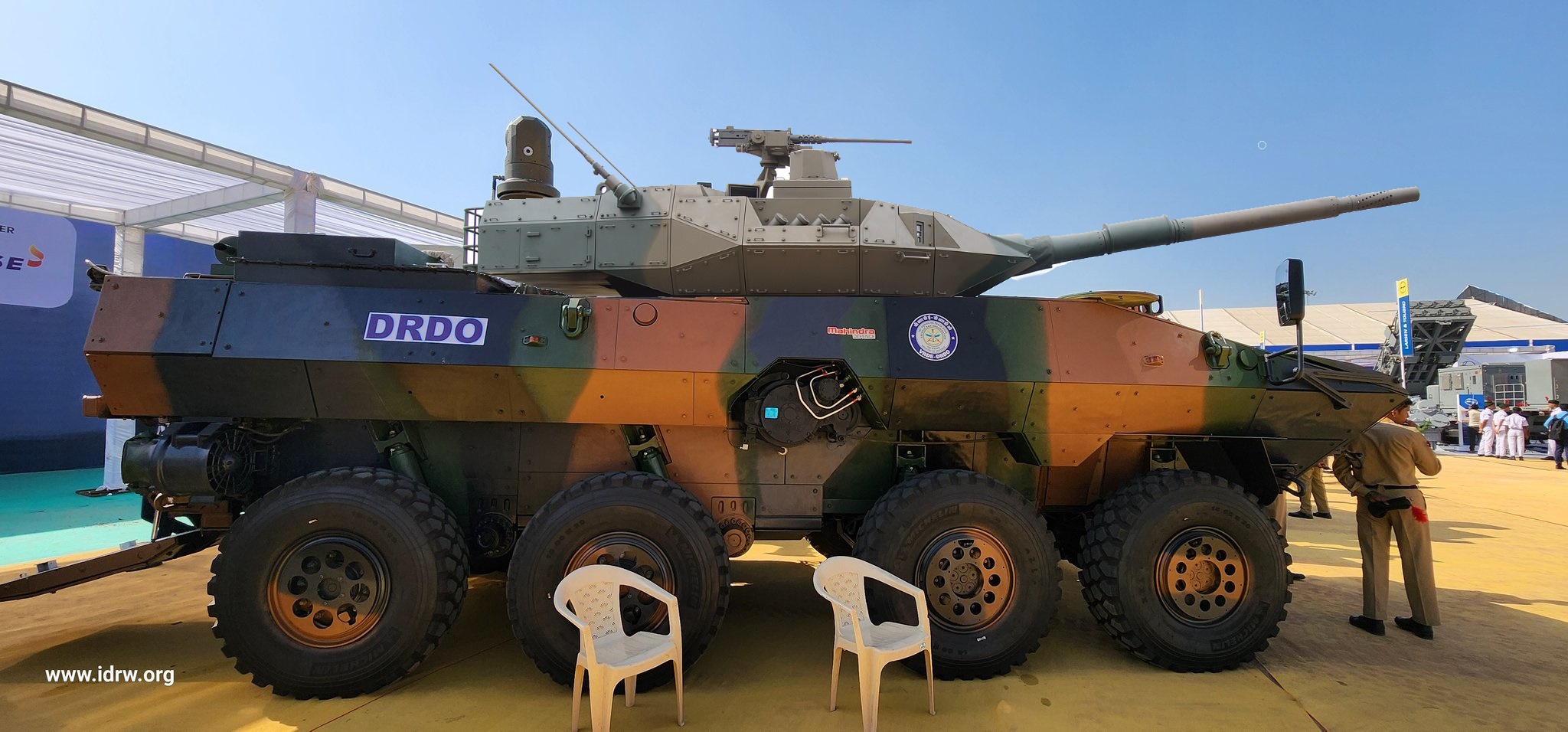
At the recent Marrakech International Air Show, Tata Advanced Systems Ltd (TASL) confirmed a significant contract with the Royal Moroccan Armed Forces to manufacture WhaP 8×8 armoured vehicles. The deal marks a major milestone in the defence relationship between India and Morocco. Tata prepares to deliver over 400 units of this versatile Armoured platform in various configurations to Morocco, with more than 150 being of the WhaP 8×8 type. The vehicles will be manufactured locally in Morocco, in partnership with local industry, strengthening Morocco’s defence manufacturing capabilities.
The Moroccan version of the WhaP 8×8 has been adapted to meet the specific operational needs of the Royal Moroccan Armed Forces. Unlike the amphibious Indian version, the Moroccan WhaP variant has had its amphibious capabilities removed, a modification that not only extends its operational range but also allows for an expanded and optimized troop transport compartment. The redesigned compartment offers improved space and comfort, enabling it to carry more personnel or equipment.
Continue reading